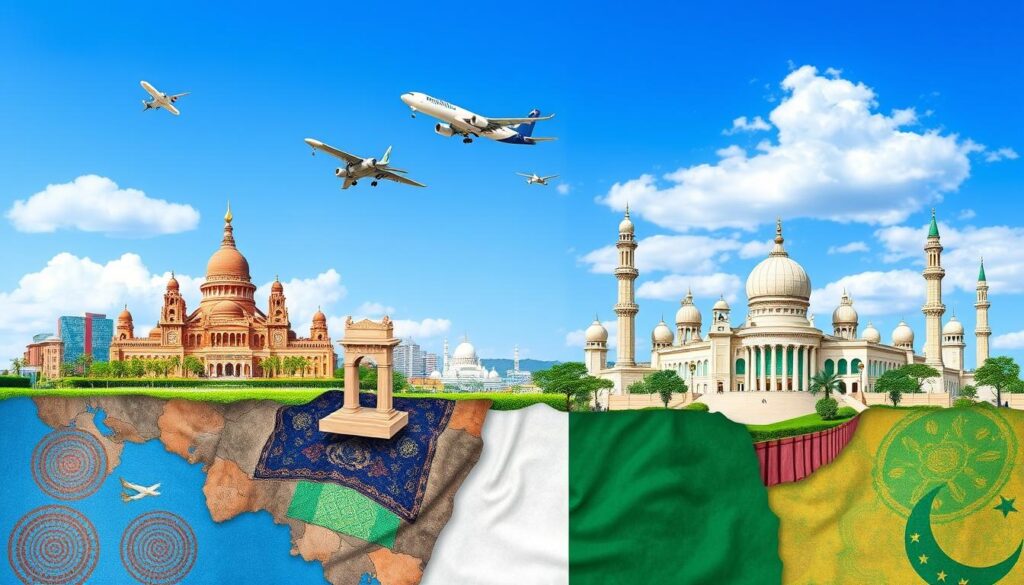Galle Literary Festival Returns to Sri Lanka After 5 Years
The Galle Literary Festival is making a comeback in 2025 after a five-year break. This celebrated event brings together renowned authors, poets, and thinkers from across the globe. The historic coastal city of Galle will once again host this vibrant celebration of literature and arts.
The 12th edition will run from February 6-9, 2025. Literary enthusiasts from near and far have been eagerly waiting for its return since 2024.
The 2024 festival drew over 5,000 visitors, with more international attendees than before. It featured 99 participants, including 25 local authors and 27 international guests.
The event offered a rich experience with more than 180 activities. These included talks, panel discussions, workshops, film screenings, and children’s programs.
Key Takeaways:
- The Galle Literary Festival, a prominent cultural event in Sri Lanka, returns in 2025 after a five-year hiatus.
- The 12th edition of the festival will take place from February 6-9, 2025, in the historic coastal city of Galle.
- The 2024 festival welcomed over 5,000 visitors, with a significant increase in international attendees.
- The festival featured 99 participants, including local and international authors, poets, and intellectuals.
- More than 180 events were scheduled during the festival, offering a diverse and engaging experience for attendees.
Galle Literary Festival Announces Dates for 2025
The Galle Literary Festival is set to return in 2025. This major South Asian literature event will be held from February 6-9, 2025. The historic city of Galle, Sri Lanka, will host the 12th edition of this prestigious book festival.
12th Edition Set for February 6-9, 2025
The Galle Literary Festival prepares for its 12th edition. Harper’s Bazaar Magazine UK named it the “No.1 Literary Festival in the world” in 2011. The festival dates align with Sri Lanka’s Independence Day on February 4th.
This timing allows attendees to enjoy both the literary event and cultural celebrations. Visitors can explore Sri Lanka’s rich heritage alongside the book festival.
Festival Expects Significant Increase in Attendees
The 2025 edition aims to attract more literature fans from around the world. Organizers expect a surge in visitors after the festival’s successful 2024 return. They’re focusing on drawing attendees from India, the Middle East, and Europe.
The festival showcases the best of South Asian literature. It also provides a platform for writers’ retreats, adding to its appeal.
| Year | International Writers | Sri Lankan Writers | Total Events |
|---|---|---|---|
| 2024 | 40 | 50 | 70+ |
| 2025 (Projected) | 60 | 75 | 100+ |
Curating a Vibrant and Thought-Provoking Program
The Galle Literary Festival 2025 promises an exciting lineup of events. Organizers are planning panel discussions, workshops, and creative experiences. These events will explore current global issues through literature.
The festival focuses on South Asian literature and meaningful conversations. It aims to bring together writers, readers, and thinkers. Attendees can engage in intellectual discussions and cultural exchanges.
Sri Lanka’s Galle Literary Festival Returns After Five-Year Hiatus
The Galle Lit Fest made a triumphant comeback in 2024 after five years. This 11th edition attracted over 5,000 book enthusiasts from January 25th to 28th. Attendees dove into the vibrant world of literature once again.
The 2024 festival featured 99 key figures, including 25 local and 12 diaspora authors. It also hosted 27 international participants, 9 chefs, and 24 moderators. With 180 events, the festival covered topics from Sri Lankan literature to global history.
The lineup included discussions on engaging the next generation with nature. The diverse programming offered something for everyone, making it a must-attend event.
Positive Feedback from 2024 Edition
Attendees and authors praised the Galle Lit Fest for its diverse programming. The festival issued 5,392 tickets, with nearly half of all events sold out. This showed strong enthusiasm and support for the beloved literary event.
| Attendee Feedback | Author Feedback |
|---|---|
| “An incredible celebration of literature and culture” | “Probably the best literary festival in the world” – Sebastian Faulks |
| “A truly enriching experience” | “The best festival I’ve ever been to, not just for literature but the arts as a whole” – Vidura BR |
| “Can’t wait for the next edition!” | “One of the most stimulating, fun and beautiful festivals I have ever attended” – Moni Mohsin |
Headlining Authors Praise the Festival
Headlining authors gave glowing reviews of the Galle Literary Festival. Mary Beard, Sebastian Faulks, Christina Lamb, and Anthony Horowitz attended the event. Alexander McCall Smith also joined, sharing insights with eager audiences.
The Festival Director highlighted the event’s role in promoting Galle and Sri Lanka. It has become a hub for creative travelers and literary enthusiasts. The festival also aims to foster a reading culture in the region.
The Galle Lit Fest continues to grow and evolve. It showcases the enduring power of Sri Lankan literature and its global appeal.
Conclusion
The Galle Literary Festival’s 2025 edition promises to be exciting. Founder Geoffrey Dobbs reaffirms its commitment to learning and cultural exchange through literature and arts. The festival seeks partnerships to make Galle a hub for education and development.
This event goes beyond literature. It creates a platform for discussions on current issues and human rights in Sri Lanka. The festival invites international writers to highlight challenges faced by cultural workers and activists.
The festival aims to foster dialogue among moderates from all communities. It focuses on social and political matters to promote understanding. With increased international participation, the event solidifies its position in South Asia.
The Galle Literary Festival continues to grow and evolve. It remains true to its core values of education and cultural exchange. Through literature, it promotes progress in Sri Lanka and beyond.
